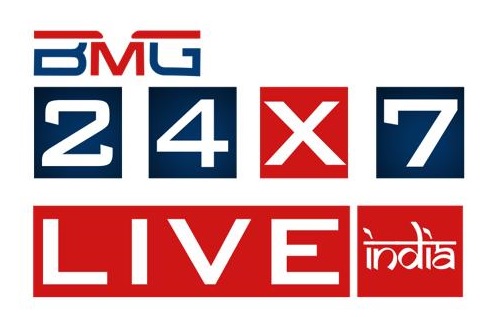India pursues 40 additional Rafale fighters to deter rivals - AGENCY REPORT
India pursues 40 additional Rafale fighters to deter rivals - AGENCY REPORT

On April 16, 2025, an Indian defense portal, Bharat Shakti, reported that the Indian Air Force is preparing to acquire 40 additional Rafale fighter jets from France through a government-to-government agreement, a move that would bolster its fleet to 76 aircraft.
This development, if finalized, would mark a significant step in India’s efforts to modernize its air force amid escalating tensions with China and Pakistan. The decision, driven by high-level discussions between Indian and French officials, reflects a strategic choice to prioritize speed and reliability over a prolonged tender process, responding to what Indian sources describe as rapidly evolving regional threats.
This deal underscores India’s growing role as a counterweight to China in the Indo-Pacific while raising questions about the global competition for advanced fighter jets and the balance of power in South Asia.
India’s pursuit of additional Rafale jets comes at a time of heightened geopolitical strain. The 2020 border clashes with China in Ladakh, which resulted in casualties on both sides, exposed vulnerabilities in India’s military preparedness, particularly in high-altitude environments.
Meanwhile, Pakistan’s acquisition of Chinese-made J-10C fighters has intensified concerns about a two-front threat. Bharat Shakti, citing high-level sources, noted that the proposed deal is seen as a strategic necessity, offering “speed, guaranteed delivery, and continuity” compared to the slower, competitive bidding process of the Multi-Role Fighter Aircraft program.
The French outlet Opex360 echoed this sentiment, highlighting that the agreement would equip the Indian Air Force with four combat squadrons, partially addressing a critical shortfall in its operational strength. This urgency reflects India’s need to maintain air superiority in a region where its rivals are rapidly advancing their capabilities.
The Rafale, manufactured by France’s Dassault Aviation, is a twin-engine, multi-role fighter jet designed to excel in air superiority, ground attack, reconnaissance, and nuclear deterrence missions.
Powered by two Snecma M88 turbofan engines, each producing 16,860 pounds of thrust, the aircraft can reach speeds of Mach 1.8 and boasts a combat range of approximately 1,150 miles. Its Thales RBE2 active electronically scanned array radar enables precise target detection and tracking, while the SPECTRA electronic warfare suite provides robust defense against enemy radar and missiles.
The Rafale’s arsenal includes the long-range Meteor air-to-air missile, capable of engaging targets beyond 100 miles, as well as the SCALP cruise missile for deep strikes and the Exocet anti-ship missile. India’s Rafale jets are customized with 13 specific enhancements, including improved cold-start capabilities for high-altitude operations and integration of the Astra Mk1 air-to-air missile, developed domestically.
These features make the Rafale particularly suited for India’s diverse operational needs, from Himalayan dogfights to coastal defense.
The Indian Air Force currently operates 36 Rafale jets, delivered between 2019 and Tons2022 under a 2016 contract valued at €7.87 billion, equivalent to roughly $9.4 billion at the time. These aircraft are stationed at Ambala Air Force Station, facing Pakistan, and Hasimara, oriented toward China.
The proposed acquisition of 40 more jets would significantly enhance the service’s ability to project power across two fronts. With a sanctioned strength of 42 fighter squadrons, the Indian Air Force is currently operating at just 31, a gap exacerbated by the retirement of aging MiG-21s and delays in domestic production of the HAL Tejas.
The addition of four Rafale squadrons would not fully close this gap but would provide a critical stopgap, enabling India to maintain deterrence while pursuing long-term indigenous solutions.
To understand the Rafale’s appeal, it’s worth comparing it to the platforms fielded by India’s rivals. China’s People’s Liberation Army Air Force operates the J-20, a fifth-generation stealth fighter designed for air superiority and deep strikes.
While the J-20’s stealth capabilities give it an edge in evading radar, its WS-10 engines are less reliable than the Rafale’s M88s, and its combat experience remains untested. The J-10C, recently acquired by Pakistan, is a lighter, single-engine multirole fighter equipped with an AESA radar and PL-15 missiles, offering performance comparable to early fourth-generation Western jets like the F-16.
However, the Rafale’s superior sensor fusion, longer-range weapons, and proven operational record—demonstrated in conflicts like Libya and Syria—give it a qualitative advantage. Against Pakistan’s JF-17, a cost-effective but less advanced platform, the Rafale’s capabilities are overwhelmingly superior, particularly in beyond-visual-range engagements.
India’s decision to pursue a government-to-government deal bypasses the competitive tender process, a choice that has sparked debate within the country. The Multi-Role Fighter Aircraft program initially envisioned procuring 114 jets through open bidding, including contenders like the American F-21, a variant of the F-16, and Boeing’s F/A-18 Super Hornet.
By opting for the Rafale, India is leveraging the logistical and training infrastructure already established for its existing fleet, a point emphasized by Bharat Shakti’s report. The commonality between the Air Force’s Rafale jets and the 26 Rafale-M variants recently approved for the Indian Navy, valued at €6.6 billion, further streamlines maintenance and operations.
However, this approach raises questions about India’s reliance on foreign suppliers, particularly as it seeks to promote its “Make in India” initiative, which prioritizes domestic defense manufacturing.
The financial implications of the deal are substantial. While exact costs for the 40 additional Rafale jets remain undisclosed, the 2016 contract for 36 aircraft provides a benchmark. Adjusted for inflation and potential enhancements, the new deal could exceed $10 billion, a significant expenditure for a nation balancing defense modernization with economic development.
India’s defense budget for 2025-26 is projected at $75 billion, with a substantial portion allocated to capital acquisitions. Critics, including opposition leaders, have previously questioned the cost of Rafale deals, with Congress leader Rahul Gandhi alleging irregularities in the 2016 contract, though these claims were dismissed by the government.
The decision to prioritize foreign purchases over domestic alternatives like the Tejas Mk1A, which has faced production delays, has also drawn scrutiny from advocates of self-reliance. Air Chief Marshal AP Singh, speaking at the Chanakya Dialogues in 2024, expressed frustration with Hindustan Aeronautics Limited’s slow delivery of Tejas jets, highlighting the urgency of bolstering the air force’s capabilities.
The strategic partnership with France is a cornerstone of this deal. France has emerged as India’s second-largest arms supplier, behind Russia, providing not only Rafale jets but also Scorpene-class submarines and missile technology.
During Prime Minister Narendra Modi’s visit to Paris in July 2023, both nations outlined a “Horizon 2047” roadmap, emphasizing defense-industrial cooperation. Dassault Aviation has established a presence in India through a joint venture, Dassault Reliance Aerospace Limited, which assembles components for Rafale and Falcon jets.
Reports from L’Usine Nouvelle indicate that Dassault is considering a final assembly line in India to meet future orders, a move that aligns with India’s push for local manufacturing. French Defense Minister Sébastien Lecornu, who is expected to attend the signing of the navy’s Rafale-M contract, has underscored the shared vision for a free and open Indo-Pacific, a sentiment echoed by Indian officials.
The deal’s regional implications are profound. China’s naval expansion in the Indian Ocean and its growing air force capabilities have prompted India to strengthen its deterrence posture.
The Rafale’s ability to conduct high-altitude operations, demonstrated in 2020 when it intercepted simulated targets at 55,000 feet, makes it a critical asset in the Himalayas. Pakistan, meanwhile, is likely to respond by deepening its defense ties with China, potentially accelerating J-10C deliveries or exploring other platforms.
The Rafale acquisition could also influence other Indo-Pacific nations. Indonesia, which ordered 42 Rafale jets in 2022, and Malaysia, evaluating multirole fighters, may view India’s choice as a vote of confidence in Dassault’s platform, potentially shifting the regional market away from American or Russian alternatives.
Globally, the Rafale’s success in India highlights the intensifying competition among fighter jet manufacturers. Lockheed Martin’s F-35, the premier fifth-generation fighter, remains out of reach for India due to cost and technology transfer restrictions.
The F-21, tailored for India’s needs, offers advanced capabilities but lacks the Rafale’s operational synergy with India’s existing fleet. Boeing’s F/A-18 Super Hornet, a contender for the navy’s carrier-based fighter program, lost to the Rafale-M in 2023 trials, underscoring Dassault’s edge in meeting India’s specific requirements.
Russia’s Su-30, which forms the backbone of India’s air force with over 260 units, faces maintenance challenges, and newer Russian platforms like the Su-57 have yet to gain traction in export markets. The Rafale’s export renaissance, with orders from Greece, Croatia, and Serbia, positions Dassault as a formidable player, challenging the dominance of American and Russian manufacturers.
Historically, India’s air force has relied on a mix of foreign and domestic platforms. The 1980s saw the induction of French Mirage 2000 jets, which proved effective during the 1999 Kargil War, delivering precision strikes with laser-guided bombs. The Rafale builds on this legacy, offering a modern, versatile platform that aligns with India’s evolving strategic priorities.
Its integration into the Indian Air Force has been smooth, with pilots trained in France and maintenance facilities established in-country. The 2019 Balakot airstrike, conducted by Mirage 2000s, highlighted the importance of advanced multirole fighters, a role the Rafale is now poised to dominate.
The jet’s ability to operate in contested environments, coupled with its interoperability with Western and Indian systems, makes it a linchpin of India’s defense modernization.
The decision to acquire more Rafale jets reflects a delicate balance between immediate security needs and long-term aspirations. For American observers, this deal underscores India’s emergence as a pivotal player in the Indo-Pacific, capable of countering China’s assertiveness while navigating complex relationships with global powers.
Yet, it also highlights the challenges of achieving defense self-sufficiency. The Tejas program, despite its promise, has struggled to meet the Air Force’s demands, with only 40 Mk1 jets delivered by 2025.
The proposed Rafale deal, if finalized, will provide a critical boost to India’s air power but may delay investments in indigenous programs, raising questions about the sustainability of its defense strategy.
As India moves forward, the Rafale’s role will extend beyond operational capabilities, shaping its strategic partnerships and regional influence. The deal’s success will depend on timely execution, cost management, and integration with India’s broader military framework.
For now, the prospect of 76 Rafale jets soaring over the Himalayas and plains offers a powerful symbol of India’s determination to secure its skies. But can India reconcile its reliance on foreign technology with its vision of self-reliance? The answer may define its trajectory as a global power in the decades to come.
***

















